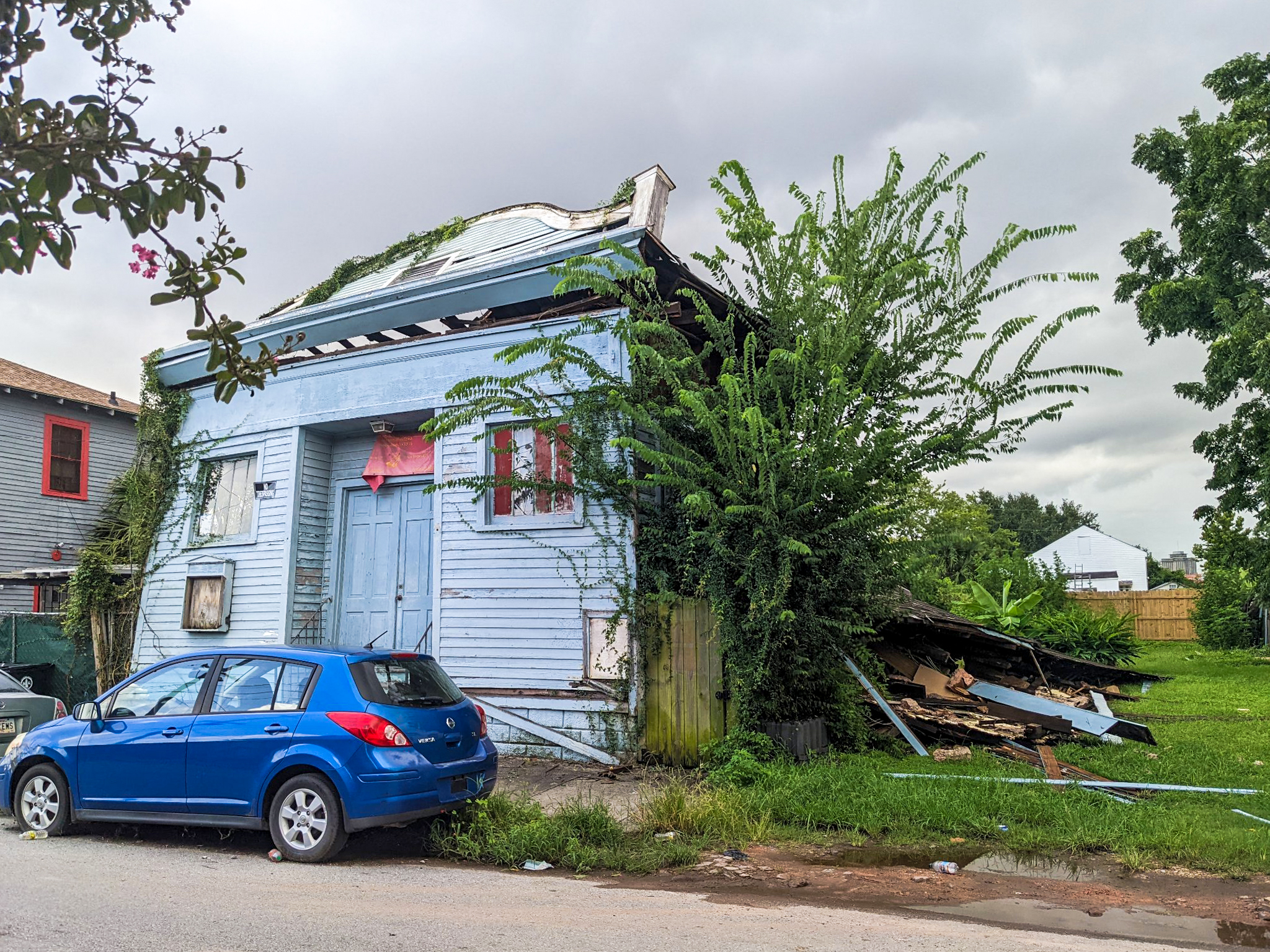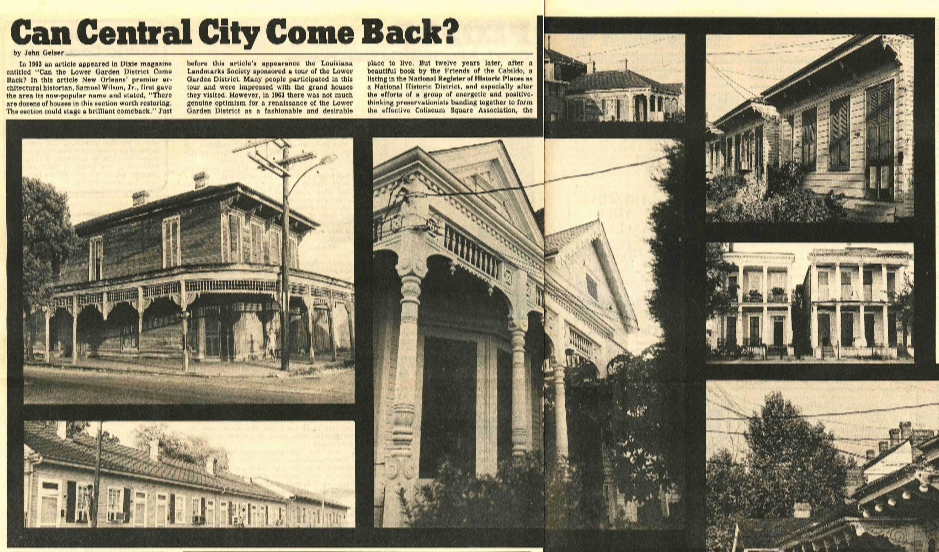This summer, when the City began in earnest to carry out the ordinance intended to force property owners to clean up and secure their properties or face the prospect of demolition, it probably didn’t anticipate the uproar it would create, as its system of assessment and notification was revealed to be riddled with errors.
The Wall Street Journal picked up the story on its front page under the headline “Katrina Survivors Face New Threat: City Demolitions.” Readers learned about New Orleanians like Idabelle Joshua, whose house in the Lower 9th Ward was demolished even though she had done everything the City required. Other examples included William and Shirley Colomb, who felt they had no choice but to camp out at their Broadmoor property to keep the bulldozers away. The Times-Picayune continued the coverage with further examples of a fractured system that seemed incapable of identifying the intended targets of its mission and failed to inspire any confidence among citizens that they would be protected from erroneous demolitions. The National Trust for Historic Preservation also covered the story on its website. The press coverage spawned interest from radio and television outlets, with news and talk shows driving the message to a broad audience.
Key to bringing the stories of loss, suffering, and confusion into the public eye has been the work of staff members, interns, and volunteers of the Preservation Resource Center and the National Trust working with the staff of Squandered Heritage, whose website, www.squanderedheritage.com, documents the narratives of the city’s struggling homeowners in words and pictures. The message has also been spread through the Preserve New Orleans email group, to neighborhood association email groups city-wide with nearly 7,000 members, and through neighborhood association leaders.
A list published in The Times-Picayune in late July, which notified the owners of over 1,700 properties that their homes faced demolition if not attended to, was not the first list by any means. But it was the largest since 2,000-plus properties had been “red-tagged” in late 2005 for structural reasons. In early 2006, the National Trust and the PRC spent weeks working with volunteers from throughout the country to inspect the 370 properties in National Register historic districts from that large list. They then submitted their findings to City officials, challenging the City’s inspections of over two-thirds of the properties and eventually getting at least 131 red-tagged buildings removed from the list.
Later, the PRC and Trust also reviewed and challenged over a hundred so-called “voluntary demolitions,” which the City offered to homeowners who wanted FEMA to pay for their demolitions. Often the challenge was based on the questionable standard the City used to approve government-funded demolition of an otherwise sound structure. At other times –due to owners responding to postcards sent to them by the PRC– the demolition was challenged. Overall, between July 2006 and July 2007, there were 471 challenges made to the City’s demolitions planned in National Register districts, and over 200 homeowners assisted in making decisions about their property. In early September, PRC expects to submit as many as 300 challenges to the latest list.
A total of about 5,500 addresses had been listed by the City for demolition by mid-summer 2007, when in late July a list of slightly over 1,700 addresses was published in The Times- Picayune. This list was different in character. First, by virtue of its sheer size it covered 24 pages of the newspaper in dense print. Second, each address contained the warning that the owner could face demolition of the property if action was not taken in 30 days to address the “imminent threat to public health and safety.” Third, in applying a revision to the City Code passed in February, the City afforded the owner no opportunity for a hearing to appeal the charges.
Using both the newspaper listings and the latest FEMA lists, staff and volunteers determined which addresses were in National Register districts, local historic districts, and other older neighborhoods. Of the 1,700 addresses, 591 were located in historic districts. Patterns and groupings were examined in the listings to determine which neighborhoods to focus on. Using City records, a compilation of property owners’ names and mailing addresses was completed. As had been done with every previous list, “Demolition Alert” postcards were mailed out to the best address available.
“Undeliverable” returned cards were numerous, but with the use of Internet search engines and creative speculation on family names and relations, cards were sent out again and again to fresh addresses, and as a result more than 218 owners responded to the mailings.
In the meantime, field work by Squandered Heritage was turning up more owners. Curious neighbors were useful sources of information on a property and often led them to the owners, most of whom werenât even aware that their property was in peril.
In the words of the City ordinance governing this process, one of the means of notifying the owner that the property is being cited is a letter sent by “Regular mail to the last known address… as reflected in the Office of the Registrar of Conveyances… and the in (sic) tax rolls of the City of New Orleans.” 90 percent of the owners who responded to the postcards sent by the PRC said that they had received nothing in the mail from the City.
Citizens’ growing anger, frustration and confusion made its way to the offices of City Council members. In the face of heightened scrutiny from the media, the Council agreed to a special meeting devoted to the matter. The morning paper carried an opinion piece from the PRC and the National Trust demanding specific improvements to the process. If the city was unable to make the changes, the City Council was urged to halt the process until it was fixed.
What resulted from the Council meeting was an ordinance that clarified the requirements to be met, called for written notice that contained the reasons for the citation, provided for written confirmation when a property was removed from the demolition list, called for a “current and accurate listing” of properties on the City’s website, and offered a safety valve: 48 hours before any demolition, the property would be re-inspected to confirm that it qualified.
A few victories were won that day after a lot of hard work by so many, but the problem is by no means solved. As of this writing, the process is still not transparent. City bureaucrats still maintain that the property owner is guilty until he can prove himself innocent –with no benefit of a hearing. The notification process has not changed in any discernable fashion. There is no apparent plan to work neighborhood by neighborhood, nor is there any prioritization of properties, whereby the “worst are first.”






